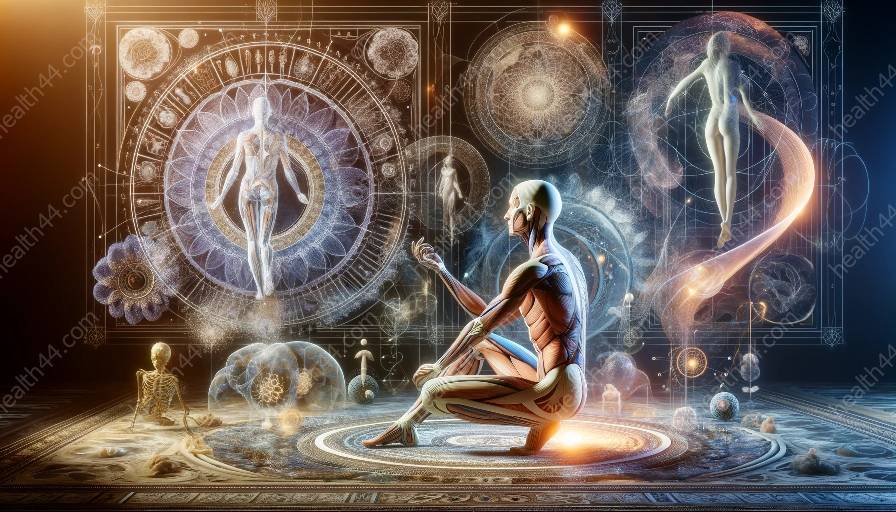The nervous system and brain form an intricate network of structures and functions that regulate and control various physiological and cognitive processes in the human body. In this comprehensive guide, we will delve into the anatomy of the nervous system and brain, exploring their interconnected components and functions.
An Introduction to Anatomy
Before we embark on our exploration of the nervous system and brain anatomy, it's essential to understand the basics of human anatomy. Anatomy is the branch of science that deals with the structure of the human body and its various parts. It provides valuable insights into the form and organization of the body’s tissues, organs, and systems, laying the foundation for a deeper understanding of the nervous system and brain.
The Nervous System: A Marvel of Connectivity
The nervous system is a complex network of specialized cells, tissues, and organs that transmit electrical signals to regulate and coordinate bodily functions. It is divided into two main parts: the central nervous system (CNS) and the peripheral nervous system (PNS).
The Central Nervous System (CNS)
The CNS consists of the brain and spinal cord, which serve as the central command center for the entire nervous system. The brain, a marvel of evolution, is the most complex organ in the human body, responsible for processing sensory information, initiating motor responses, and controlling higher cognitive functions such as thinking, learning, and memory.
The Spinal Cord
The spinal cord, an elongated bundle of nerves, extends from the base of the brain and runs through the spinal canal. It serves as a crucial pathway for transmitting sensory information from the body to the brain and relaying motor signals from the brain to the muscles and glands.
The Peripheral Nervous System (PNS)
The PNS comprises an extensive network of nerves that connect the CNS to the rest of the body, conveying sensory information from the external environment to the CNS and carrying motor commands from the CNS to the muscles and organs. It further divides into the somatic nervous system, which governs voluntary movements, and the autonomic nervous system, which controls involuntary bodily functions such as heart rate, digestion, and breathing.
The Brain: A Masterpiece of Complexity
The brain, a marvel of biological engineering, is the command center of the nervous system, orchestrating an array of functions that enable human consciousness, perception, and behavior. It is divided into several major regions, each with specialized functions and interconnected neural pathways.
The Cerebrum
The largest and most prominent part of the brain, the cerebrum, is responsible for higher cognitive functions, including reasoning, problem-solving, language, and sensory perception. Its outer layer, the cerebral cortex, plays a vital role in processing sensory information and initiating voluntary muscle movements.
The Cerebellum
The cerebellum, located beneath the cerebrum, is primarily involved in coordinating and regulating motor movements, balance, and posture. It also contributes to cognitive functions such as attention, language, and emotional regulation.
The Brainstem
Situated at the base of the brain, the brainstem serves as a vital link between the brain and the spinal cord, controlling essential physiological functions such as breathing, heart rate, and sleep-wake cycles. It houses the medulla oblongata, pons, and midbrain, each playing distinct roles in regulating autonomic functions and relaying sensory and motor signals between the brain and the body.
Interconnected Functionality of the Nervous System and Brain
The nervous system and brain exhibit remarkable interconnectedness, enabling seamless communication and coordination throughout the body. Sensory receptors located in various tissues and organs detect changes in the internal and external environment, transmitting signals to the CNS. The brain processes and interprets this sensory information, formulating appropriate responses that are conveyed back to the muscles and organs via the PNS.
Furthermore, the brain's intricate neural circuits and neurotransmitter systems govern a myriad of functions, including mood regulation, memory formation, and the integration of sensory information. This intricate network of neural connections and chemical signaling pathways underscores the marvel of the nervous system's adaptability and plasticity, allowing for learning, adaptation, and response to environmental stimuli.
Conclusion
The nervous system and brain anatomy unveil the awe-inspiring complexity and organization of the human body's control and regulatory systems. Understanding the anatomical structures and functions of the nervous system and brain provides a profound insight into the mechanisms underlying human behavior, cognition, and physiological processes. As we continue to unravel the mysteries of the nervous system and brain, we gain a deeper appreciation for the wondrous capacities of the human mind and body.































